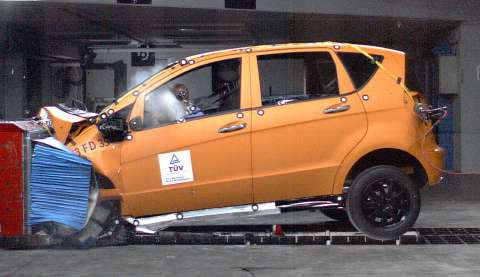 65 Years Ago: The Start of Safety Development at Mercedes-Benz |
 65 Years Ago: The Start of Safety Development at Mercedes-Benz |

|
28th July, 2004 Exactly 65 years ago, the recruitment of the inventive genius Béla Barényi saw the start of systematic passenger car safety development at Mercedes-Benz. The crumple zone, safety steering column, steering wheel impact plate and side impact protection are examples of the pioneering inventions for which this first Mercedes safety engineer was responsible. To this day they provide the very basis for modern automobile technology, and show how closely the development of vehicle safety is linked to the history of Mercedes-Benz. With innovations such as the sandwich concept of the A-Class or the preventive protection system PRE-SAFE, the Stuttgart automobile brand continues to be the pacemaker in this field. Initially the department for safety development, which was formed on 1st August, 1939, only consisted of four employees. It was headed by the Austrian-born engineer Béla Barényi (1907–1997), who had previously been employed by the "Society for Technical Progress" in Berlin and submitted more than 150 patent applications for automobile and vehicle designs during this time. The cradle of passenger car safety technology was a wooden hut measuring around 100 square metres at the edge of the Mercedes plant in Sindelfingen. Here Barényi and his personnel devoted themselves to improving occupant protection. Just one year after taking up his post, this impassioned engineer attracted attention with his first prototype featuring an "accident-resistant" floor assembly, rigid passenger cell and special side protection. Within a short time this prototype was followed by other trailblazing inventions. "To this day vehicle safety is based on the foundations that Béla Barényi laid", says Dr Rodolfo Schöneburg, Head of Safety/Vehicle Functions at the Mercedes-Benz Technology Centre. Béla Barényi developed the principle of the crumple zone during the 1940s; it was patented in August 1952 and first entered series production in 1959, in the Mercedes-Benz 220 (W 111). By the time he went into retirement at the end of 1972 this pioneer in passenger car safety had submitted patent applications for more than 2500 inventions. In subsequent years Mercedes engineers have continued to set standards in the field of vehicle safety with trailblazing new developments such as belt tensioners, the airbag, the anti-lock braking system (ABS), Brake Assist and the Electronic Stability Programme (ESP®). Nowadays these systems are standard equipment in all passenger cars bearing the Mercedes star, as well as those of numerous competitors. Mercedes specialists also showed great creativity and expertise with the patented sandwich concept of the A-Class in 1997. It was on this basis that a compact car with the occupant safety typical of a Mercedes was able to be designed for the first time. For the new A-Class to be launched in 2005, Mercedes-Benz has developed the sandwich concept even further and combined it with the latest protection systems. A new era in passenger car safety began with another Mercedes-Benz development in 2002, the preventive occupant protection system PRE-SAFE, which is standard equipment in the S-Class and will also become available for other Mercedes models in future. PRE-SAFE is able to recognise an impending accident in advance and immediately goes into action to prepare both the occupants and the car for an imminent collision, for example by pre-tensioning the seat belts as a precaution. Even 65 years after the formation of the first department for passenger car safety, innovations such as this underline the leading position of Mercedes-Benz in this important area of automobile technology. |
 Click logo for home page |